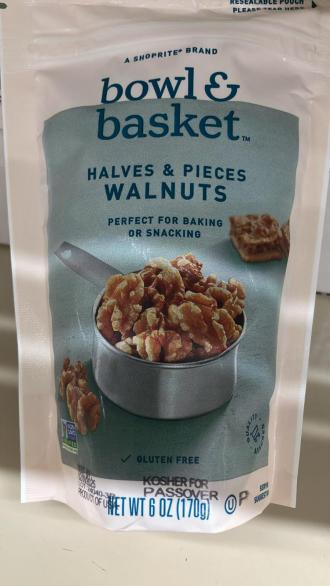Question #1: Stuffing a Pillow
“My pillow is torn, and some of the filling has fallen out. May I restuff it on Shabbos?”
Question #2: Stitches
“Does stitching a wound closed involve a Torah prohibition on Shabbos?
Question #3: Miscellaneous
What do these questions have to do with one another?
Introduction
Among the 39 melachos of Shabbos, we find several sets of pairs, including tying and untying, writing and erasing, building and razing, and kindling and extinguishing. One of the sets is tofeir and korei’a, sewing and tearing. Of this pair, korei’a usually gets more coverage in practical halacha, because it involves many common questions such as opening packaging and tearing toilet paper. So that tofeir does not feel left out, the aim of this article is to show that there are many interesting details relevant to this melacha, and we will also discover some halachic surprises.
Tofeir 101
First, some introductory information about this melacha: One violates the av melacha either by sewing three stitches (meaning that the needle goes through the material three times) or by sewing two stitches and then tying the thread with a knot, so that the stitches remain (Rambam, Hilchos Shabbos 10:9). Without this last step, the stitches will not last, and, therefore, one does not violate the melacha min haTorah.
Non-permanent sewing
The rishonim dispute whether one violates a melacha min haTorah if one sews an item closed, but intends to open the stitches very shortly. Why would one do this? An example is that launderers sometimes stitched small items of clothing to larger ones, so that they will not get lost. This stitching will be removed as soon as the laundry is complete. Does this involve a Torah prohibition or is it prohibited only because of a rabbinic injunction?
I’ll provide a contemporary application, although it presumably does not affect most of our readers. To make sure that they remain firmly in place, boxing gloves are sewn closed around the wrists of the boxer. However, the boxer presumably wants to remove his gloves before his next meal or when he next needs to blow his nose. Thus, although the gloves are sewn very tightly onto his hands, the stitches will be undone very shortly, sometimes within a few minutes, if the boxer is either extremely successful or extremely unsuccessful. Does this sewing involve a Torah prohibition?
Most rishonim follow the more stringent approach, which is also the way the Shulchan Aruch rules (Orach Chayim 340:7). The Rema (Orach Chayim 317:3) quotes both approaches. Most later authorities understand that the Rema also concludes that the primary opinion is that sewing properly is prohibited min haTorah, even when one intends to rip out the stitches shortly (Tehillah Ledavid 340:6; Chazon Ish, hashmatos, Orach Chayim page 257; cf., however, Graz 317:7). So, boxers, beware, don’t sew your gloves on Shabbos! (Now, can you have a non-Jew do it? That is a topic for a different time!)
Tightening stitches
Here is a case that involves sewing min haTorah that most people do not realize is prohibited. On Shabbos, someone sees that some stitching on his garment is loose, so he pulls the stitching together. Halachically, this is considered an act of sewing the two pieces of the garment together, and, therefore, this seemingly innocent act involves a Torah prohibition of sewing (see Rashi, Shabbos 75a). This act will be prohibited min haTorah also on Yom Tov.
Embroidering
Embroidering cloth also violates the av melacha of tofeir (Nimla Tal, Meleches Tofeir note 25). Notwithstanding that, when embroidering, one does not necessarily stitch through the entire thickness of the cloth, there is still a Torah violation of tofeir (Yerushalmi, Shabbos 7:2, as explained by Pnei Moshe).
Pinning
A safety pin is usually inserted twice through cloth and then closed. Could this be considered sewing, since it is similar to making two stitches and then tying a knot, which is prohibited min haTorah?
Indeed, several prominent early acharonim banned the use of safety pins for precisely this reason (Shu”t Ginas Veradim, Orach Chayim 3:17, 19; Rabbi Akiva Eiger, notes to Magen Avraham 340:11; see also Korban Nesanel, Shabbos 7:50). However, many later acharonim permitted the use of pins on Shabbos, citing the following reasons:
(1) The closing performed by pinning is by nature temporary, and therefore not an act of tofeir (Chazon Ish, Orach Chayim #156, page 257, notes to Chapter 340; Az Nidberu 3:72).
(2) Tofeir is the act of making two or more items into one unit, which a pin does not do (Shu”t Igros Moshe, Orach Chayim 2:84). Notwithstanding that a pin attaches two items, there are many activities that attach two items, such as buttoning, zippering and snapping, all of which are permitted on Shabbos. So, there is no reason to assume that pinning two items together should be treated any more stringently than buttoning them together.
The position of the Mishnah Berurah on this question is unclear (see 308:46; 340:27). Rav Yaakov Kamenetsky understood that the Mishnah Berurah was also lenient about the use of pins on Shabbos (Emes Leya’akov, Orach Chayim 340).
Stuffing a pillow
Now that we have a basic introduction to the melacha, we are in a position to discuss the halachos relevant to our opening question: “My pillow is torn, and some of the filling has fallen out. May I restuff it on Shabbos?”
The answer to this question lies in understanding a small passage of Gemara (Shabbos 48a), which teaches the following:
Rav Chisda permitted returning stuffing into a pillow on Shabbos. Rav Chanan bar Chisda asked Rav Chisda how he could permit this, since an earlier, authoritative source (a beraisa) prohibited stuffing soft material into a pillow on either Yom Tov or Shabbos. Rav Chisda responded that it is prohibited to create a pillow for the first time by stuffing it, but it is permitted to restuff an old pillow.
Why can’t you stuff?
What is wrong with stuffing a pillow on Shabbos? The rishonim dispute why the beraisa prohibited stuffing a new pillow on Yom Tov or Shabbos. Rashi explains that the prohibition is because of the melacha of makeh bepatish, making a new item, since one is manufacturing a new pillow. The Mishnah Berurah (340:33) understands this act to be a Torah violation of the melacha.
However, the Rambam explains the Gemara quite differently, that the prohibition here is rabbinic, and that this is not a case of makeh bepatish. He understands that Chazal prohibited stuffing the pillow because of concern that someone might forget and sew the pillow closed (Hilchos Shabbos 22:23).
Both opinions agree that the prohibition is only to stuff a pillow for the first time, but that it is permitted to replace stuffing that fell out (Shulchan Aruch, Orach Chayim 340:8). Thus, we have an answer to the question: “My pillow is torn, and some of the filling has fallen out. May I restuff it on Shabbos?” The answer is that one may, assuming that one does not tighten the thread that connects the two sides.
Stitches
An interesting and contemporary question with a surprising answer is whether suturing a wound on Shabbos by a physician involves a de’Oraysa prohibition of sewing. In truth, most instances of stitching usually entail an element of pikuach nefesh, life-threatening emergency, because of the risk of infection. It seems to this author that this would permit stitching a wound on Shabbos, even if it involves an act that is a melacha min haTorah. However, there are at least three situations in which it will make a practical difference whether stitching a wound closed involves a Torah prohibition or not.
I. Extra stitches
One of the differences that might result is whether, because of asthetic, non-medical reasons, it is permitted to make more stitches than necessary. For example, when a plastic surgeon closes a wound, he makes the stitches very close together in order to avoid a serious-looking scar. To do so, he uses more stitches than necessary from a strictly medical basis. These additional stitches are not pikuach nefesh, since one can safely close the wound with fewer stitches.
II. Non-Jew
Whether one can have a Jew perform melacha that is pikuach nefesh when a non-Jew is available is a dispute among rishonim and early poskim. In our case, it would have the following application: Is one permitted to have a Jewish physician suture a wound closed on Shabbos when there is a non-Jewish physician available who can?
III. Late on Shabbos
If an injury was sustained on Shabbos afternoon not long before sunset, it is usually not pikuach nefesh to close the wound immediately; one can wait safely until Shabbos is over and then stitch the wound closed. Thus, if stitching the wound involves a Torah prohibition, one should wait until after Shabbos to suture it. However, if no violation is involved, one might be able to suture it immediately.
At this point, we will discuss whether stitching a wound is included under the melacha of tofeir on Shabbos. I have seen two reasons to contend that there is no melacha of tofeir involved in stitching a wound closed:
A. We do not find that sewing as a melacha applies to the bodies of people (Shemiras Shabbos Kehilchasah, 1979 edition, Chapter 35, note 62).
B. Tofeir is the combining of two items. Stitching skin does not make the two sides into one unit, but draws them close together so that they can heal into one unit (Nimla Tal, meleches tofeir #37). Thus, the stitching does not consist of a melacha min haTorah.
Tied in knots
However, either of these approaches may not change what the practical halacha is in these situations, because of a completely different problem. When stitching a wound closed, every stitch is followed by tying a knot, which is left permanently. Even when the stitch is removed, it is removed by cutting the thread and slipping out the stitching, not by untying the knot. Thus, the surgeon’s knot, which is definitely a specialist’s knot and is also knotted permanently, probably involves a melacha de’oraysah of kosheir, tying knots, a different one of the 39 melachos. Since this article is about tofeir and not about kosheir, I will leave further discussion on this point for a different time. Those who have the shaylah should get direction from their rav or posek.
We can now address the second of our opening questions: “Does stitching a wound closed involve a Torah prohibition on Shabbos?”
It would seem that stitching a wound closed on Shabbos involves a Torah prohibition of knotting.
Conclusion
We have learned many details about the melacha of sewing. Sewing three stitches violates the melacha min haTorah, as does sewing two stitches and then securing them so that they hold. Although using a safety pin may appear to be similar to sewing two stitches and securing them, many later authorities permit using pins to hold things together on Shabbos. We learned that stuffing a pillow for the first time is prohibited on Shabbos, and, according to some authorities, the reason for this prohibition is because we are concerned that someone may inadvertently sew the pillow closed. We also learned that there is an interesting halachic discussion whether stitching a wound closed involves a Torah prohibition on Shabbos.
Rav Samson Raphael Hirsch (Shemos 20:10) notes that people mistakenly think that work is prohibited on Shabbos in order to provide a day of rest. This is incorrect, he points out, because the Torah does not prohibit doing avodah, which connotes hard work, but melacha, which implies purpose and accomplishment. The goal of Shabbos is to emphasize Hashem’s rule as the focus of creation by refraining from our own creative acts (Shemos 20:11).















